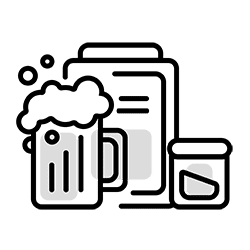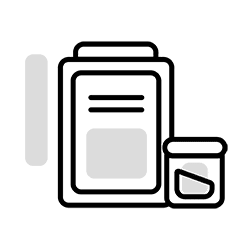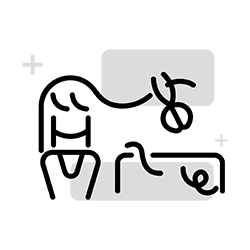Alcohol testing is available with urine, hair and breath alcohol. Our alcohol testing services can be ordered for employment purposes, personal drug tests, probation, court ordered and other testing reasons. EtG alcohol testing available with urine or hair. DOT alcohol testing is also available. Our alcohol testing centers are available in all areas of the United States.
EtG alcohol testing is measuring past consumption of alcohol (not measuring impairment). The window of detection for consumption of alcohol is up to 80 hours for a urine EtG test and up to 90 days for ha hair EtG test.
Breath alcohol testing measures current impairment.
Standard urine alcohol test or urine drug test panel combined with alcohol testing measures ethanol in the urine and indicates prior use. This test results may not correlate with the degree of intoxication observed at the time the specimen is provided. See more below about challenges with urine alcohol testing.
Need Testing Today – Call us Today: 866-843-4545 – Immediate Service is Available Monday-Friday 9am-6pm EST (Online orders received after hours or on Saturday, Sunday or National Holidays are processed next business day)
-
Urine Alcohol with 5 Panel Drug Test
Price: $83.00(each)
Order Now -
Urine Alcohol with 10 Panel Drug Test
Price: $83.00(each)
Order Now -
Alcohol EtG with 10 Panel + Exp Opi Drug
Price: $165.00(each)
Order Now -
Urine Alcohol Test
Price: $88.00(each)
Order Now -
Alcohol EtG – Urine Test
Price: $139.00(each)
Order Now -
Alcohol EtG – Hair Test
Price: $438.00(each)
Order Now -
5 Panel + Alcohol EtG Urine Drug Test
Price: $155.00(each)
Order Now -
5 Panel + Alcohol Urine Drug Test
Price: $83.00(each)
Order Now -
10 Panel + Alcohol Urine Drug Test
Price: $88.00(each)
Order Now -
Breath Alcohol Non DOT
Price: $69.00(each)
Order Now -
Breath Alcohol DOT
Price: $69.00(each)
Order Now -
Hair Test ETG Alcohol
Price: $438.00(each)
Order Now
Note several types of alcohol testing available:
- Breath Alcohol Testing – An evidential breath alcohol testing device is used collecting a breath sample to determine current intoxication.
- Blood Alcohol Testing – a blood specimen is analyzed and provides a result that nay indicate current intoxication. National Drug Screening is not offering blood alcohol testing.
- Urine Alcohol Test or Urine Alcohol combined with a drug test – the alcohol testing result may not correlate with the degree of intoxication observed at the time the specimen is provided.
- EtG Testing – can be combined with a drug testing panel like a Urine Alcohol with 10 Panel Drug Test, this EtG testing measures recent consumption of alcohol and not impairment or intoxication.
Challenges with Urine Alcohol Testing
Urine alcohol testing other than ETG alcohol testing does not show current impairment. In fact, the individual being tested may have had a few drinks over the weekend and tested positive on a urine alcohol test on Monday morning. Did they violate any company policy? Most likely the answer is NO.
Apart from EtG testing, a standard urine alcohol test has challenges. Since alcohol is legal, it is important we do not take adverse action on a urine alcohol positive test as we may not have proved any impairment or intoxication. With these tests the presence of alcohol in the urine indicates recent prior use but may not correlate with the degree of intoxication observed at the time the specimen is provided. It’s complicated so specifically for workplace testing, National Drug Screening, Inc does not recommend standard urine alcohol testing or adding standard alcohol testing to a drug testing panel. False negatives or false positives may occur. Diabetic patients who are spilling glucose into their urine may have a positive test even though they did not consume alcohol.
We do see urine alcohol testing with a 5 or 10 panel drug testing being ordered for probation testing.
EtG Alcohol Testing
An EtG test advantage is that EtG remains in the body long after all the alcohol is gone. ETG is Ethyl Glucuronide which is a by-product or direct metabolite of alcohol as it breaks down in the body. EtG can be detected with EtG urine testing or EtG hair testing. Since EtG is measuring consumption of alcohol it is often used with zero tolerance programs (like multiple DUI’s) where the individual is prohibited from any consumption of alcohol.
ETG Alcohol Test Urine Panel
An EtG test advantage is that EtG remains in the body long after all the alcohol is gone. ETG is Ethyl Glucuronide which is a by-product or direct metabolite of alcohol as it breaks down in the body. In urine, ETG can be detected up to 80 hours as it is stored in the body for a longer period of time. This test will not detect current impairment but will detect that alcohol was consumed in the past 80 hours. This test is particularly useful for individuals in rehabilitation programs and in the criminal justice system to make sure that the individual is not consuming alcohol.
ETG Alcohol Test Hair Panel
Testing with hair has a longer lookback period – up to 90 days. A metabolite of alcohol called ETG can show in hair after about 7 days and up to about 90 days. This test is used to determine if the individual has consumed alcohol in the past 90 days. It should not be used to detect a one-time consumption of alcohol but EtG hair tests are generally best used only to determine whether a person has used alcohol chronically over a period of time. 1.5 inches of head hair is required for this testing which will give the up to 90 day look back period. The 1.5-inch sample of about 200 strands of hair (about the size of a #2 pencil) closest to the scalp will give 100mg of hair, the ideal sample for screening and confirmation.
The ETG test for hair should not be used for a workplace test unless the individual is in a zero-tolerance alcohol treatment program. ETG alcohol testing with hair is often used in legal and court cases as well as child custody cases to determine an individual is or is not consuming alcohol. Commonly called hair follicle testing, the hair testing for alcohol for drugs is not testing the hair follicle. The hair is cut at the scalp, as close as possible to the scalp to determine the most recent drug or alcohol use.









